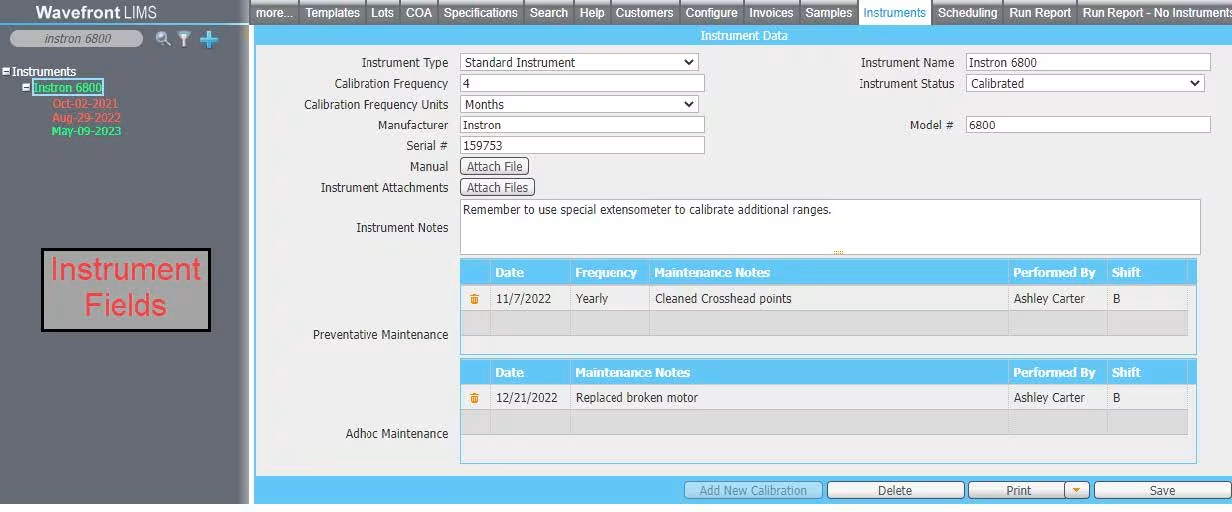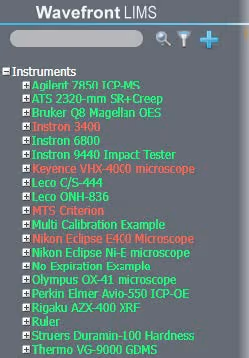by Ashley Carter
Share
When you think of a LIMS, you may think about testing and data, but what about the instruments used to complete the testing? Any lab that deals with auditing, such as ISO 17025 or Nadcap, knows the importance of tracking instruments. They need to identify what instrument was used for each test and the active calibration at the time of testing.
Good news! Some LIMS solutions, such as Wavefront LIMS, have created an Instrument Calibration module that integrates with testing. This makes maintaining calibrations, as well as the documentation of the active calibrations during testing, a breeze. Even better, everything is in one system!
Every LIMS provider, that offers such a feature, is going to have their own take on how to address it. Below shows information specific to the LIMS offered by Wavefront Software to provide an example of one method. It is important to compare your laboratory’s needs against what the LIMS provider offers for each module.
Capturing All Information
Each instrument is different from the next, so it is important to be able to capture the appropriate information. Some examples are: how the calibration is to be completed (in house or outsourced), important notes about the instrument and how it should be handled, and notes about the calibration (i.e. if there was any maintenance done as part of the calibration or recommendations for future calibrations). Wavefront LIMS is highly configurable, so the user can create new fields as needed.


Track Upcoming Calibrations
Wavefront LIMS offers a report that identifies the instruments that are expired or are going to expire within the next few months. This is a helpful tool for forward planning of any laboratory.
The interface itself makes expired instruments easy to see at a glance. Color coding the instrument list shows any expired instrument as red.

Applying Instruments to Tests
In Wavefront LIMS, users can select calibrated instruments at the test level. Therefore, a review of the test will include what instrument was used. Each selection also includes the date of the calibration that was then active. This provides an easy view of pertinent information in one spot.
Integrating the tracking of instruments and their calibrations in LIMS is extremely beneficial. Click the Schedule a Demo button at the top of the page and a knowledgeable Wavefront individual will reach out. Ask us about how Wavefront LIMS can help your laboratory organize your instrument and calibration data into one system.
STAY IN THE LOOP
Subscribe to our Free Content
Learning about LIMS is a monthly article series where Wavefront shares questions that have come up throughout our interactions with a range of individuals and customers. We do our best to provide information about each topic to help people learn more about LIMS.
Sign up here to be added to our mailing list and receive these articles directly in your inbox.
In today's rapidly evolving laboratory environment, effective data management has become increasingly crucial for maintaining operational excellence and competitive advantage. Modern laboratories generate an unprecedented variety of data types, each requiring specific handling protocols and storage considerations. A robust Laboratory Information Management System (LIMS) serves as the cornerstone of efficient laboratory operations, providing comprehensive solutions for data complexity, regulatory compliance, and long-term data integrity while ensuring seamless workflow integration.
Laboratory staffing shortages have become a critical challenge across industries. Learn how LIMS features and automation helps laboratories maintain high standards and increase efficiency, even with reduced personnel. Wavefront LIMS provides comprehensive solutions for workflow automation, knowledge transfer, and staff development - enabling your laboratory to thrive despite staffing constraints.
In an era of increasing complexity and rising performance expectations, laboratories must do more with less. Discover how a Laboratory Information Management System (LIMS) can transform operational challenges into competitive advantages, turning your lab from a cost center into a strategic asset.
In an increasingly competitive and regulated laboratory environment, implementing a robust Sample Management Software solution is essential for driving operational excellence. A comprehensive Laboratory Information Management System (LIMS) streamlines sample tracking, enhances data integrity, facilitates compliance adherence, and unlocks powerful analytics for continuous improvement. Discover how to harness the transformative potential of LIMS to position your laboratory for long-term success.





